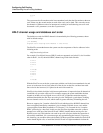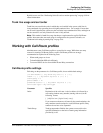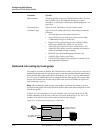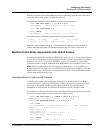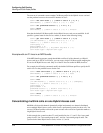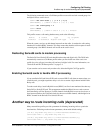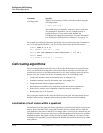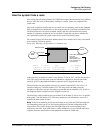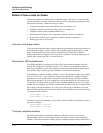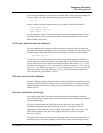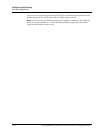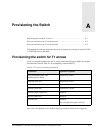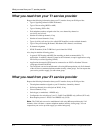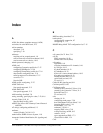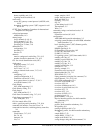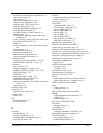
19-12 Preliminary May 9, 2000 APX 8000/MAX TNT/DSLTNT Physical Interface Configuration Guide
Configuring Call Routing
Call routing algorithms
Details of how a route is chosen
The system compares call information to its database entries. The entries are accessed in the
order in which they are sorted, with devices that are used less frequently preceding those that
have been used recently, and the following sort orders:
• Trunk group number (sorted in descending order; for example, 9–4)
• Subaddress number (sorted in descending order; for example, 9–1)
• Telephone number (empty telephone numbers last)
• Destination device address (zero components sorted after nonzero components)
• Source device address (zero components sorted after nonzero components)
• Routing type (Any-Call-Type last)
First pass: trunk group number
The first pass through the database compares trunk-group information gathered from the call to
the trunk-group numbers in entries. Entries with a matching trunk-group number or a trunk
group of zero remain in the list for the next comparison pass. Entries with a different
trunk-group number are dropped for the next pass. For example, if the input trunk group is 9,
profiles with a trunk group of 0 or 9 remain in the list.
Second pass: ISDN subaddresses
If an ISDN subaddress is configured on a line, callers must include the number in the dial
number. For example, the caller dials 510-555-1212, 3 where 3 is the subaddress number.
Specifying a subaddress as part of the telephone number makes the telephone number much
more specific. Only calls that specify the subaddress will match this parameter.
If an inbound call contains an ISDN subaddress as part of the telephone number (for example,
the 3 in 510-555-1212, 3), the TAOS unit compares that subaddress to the Phone-Number
parameters in its call routing database and rejects entries that specify a different subaddress.
Only profiles that specify the same subaddress as the one presented by the call remain in the
list, unless the TAOS unit finds no profiles with a matching subaddress. In that case, it keeps
profiles with no subaddress specification in the list and uses them in the next comparison pass.
For example, if the input subaddress is 9, only devices that specify a subaddress of 9 in the
Phone-Number parameter remain in the list. Profiles with specifications such as the following,
for example, remain in the list:
phone-number = 9,
phone-number = 9,555-1212
If no devices specify the subaddress 9, only devices with no subaddress specification remain in
the list. For example:
phone-number = 555-1212
phone-number = 777-9898
Third pass: telephone numbers
The TAOS unit compares the telephone number on which the call was received to the
Phone-Number values in its call-routing database and rejects all entries with nonmatching
numbers. To match the telephone number, an entry’s telephone number must be smaller than or



